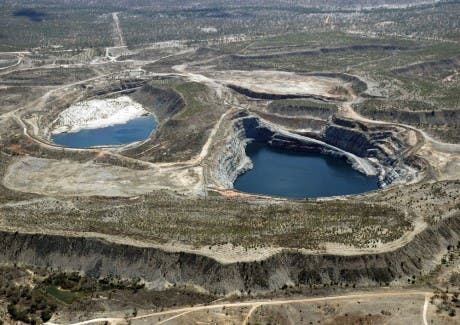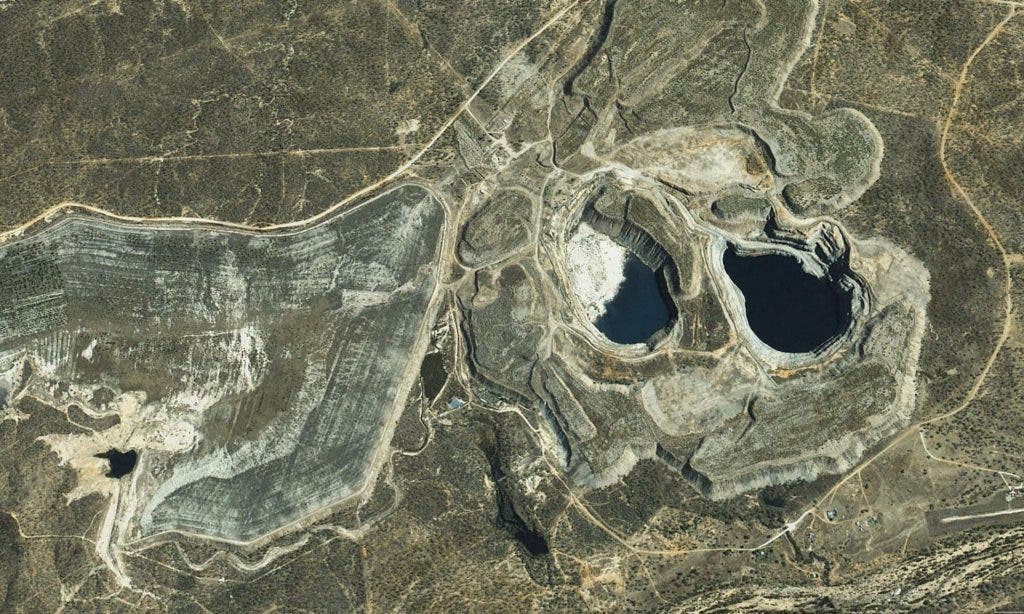
For over a hundred years, north-western Queensland’s Kidston was a mining town. Gold was first discovered in the area in the 1880s but the location was kept a secret. It wasn’t until the alluvial field was opened in 1907 that prospectors arrived to test their luck. In time a community was formed around the gold mining site named after William Kidston, the state’s then premier.
Today, however, there is little mining work left in the small town. In 2001, one of the largest such operations in Kidston — a huge open-cut mine with two craters each 300 meters deep — shut down, joining the rest of 50,000 mines in Australia that are now depleted or out of business. But while this might sound depressing, the story of Kidston is far from over and might actually get a turn for the better as the small mining town is prepping to jump into the future and transform itself into a massive renewable energy hub.
Thinking outside the box
The great-great-grandson of the former Queensland premier from the turn of the century, Simon Kidston, is the chief executive of an energy company called Genex. Backed by funding from the Australian government, Genex plans to put the bleeding ground of Kidston to good use by turning the craters into a pumped hydroelectric energy storage (PHES) system. A 50-megawatt solar farm which is already under construction will generate the necessary power to pump water in the reservoirs to store the energy, besides supplying enough energy to power 27,500 homes. The two systems, production and storage, will make the Genex project in Kidston the first large-scale off-river solution.
One of the biggest challenges faced by the wide-scale adoption of renewable energy is storage. Wind and solar are intermittent, so you need a storage component to level the field between energy supply and demand. To store renewable energy, you can use batteries, supercapacitors or even molten salts. By far, however, the most common method for storing renewable energy is pumped hydro. It’s also the most mature and oldest energy storage system.
The working principle for pumped hydro is very simple. Water is pumped in between two reservoirs positioned at different heights, where the difference in elevation is called the ‘water head’. When there’s low demand but the sun is shining strongly to produce a lot of energy, water is pumped into the highest reservoir. When demand is high and the solar farm can’t supply it, energy is released from the highest reservoir whose water flows into the lower reservoir pulled by gravity alone.

The potential energy stored in the pumped hydro system depends on the volume of water the reservoirs can store. Genex says its pumped hydro will have a water head of 190 meters and will shift 5 million cubic meters of water. That’s a maximum energy capacity of 2250 MWh which can be used in the grid.
“We’re not aware of any examples anywhere else in the world where there is a large pumped storage system, or any efficient storage mechanism, with a renewable generation component attached to it – not on the scale we’re talking about,” Kidston told The Guardian.
Besides the huge environmental impact that comes with turning a gold mine into a renewable energy farm, Genex’s project promises to build one of the most environmentally friendly pumped hydro systems. Typically, these are built around rivers and require huge quantities of water sourced from a dam.
The Kidston project, however, will use two reservoirs in a closed system meaning the same water will be pumped in and out. In times of drought, water will be sourced from a pipeline that already connects the mine with a dam nearby, a leftover from the mining days. In fact, there are many other perks at Kidston like good access roads, an airstrip, camps for workers, plenty of sunshine for the solar panels, as well as a working transmission line.
By exploiting this existent infrastructure which would have otherwise gathered dust and gone to waste, Genex says it will spend only $1 million for installed megawatt for the whole 300 MW projected. Were they to start from scratch, the cost would have hovered anywhere between $4 and $5 million — that’s only a fifth of the cost for Genex.
“When we were looking at developing some pumped storage hydro we tried to think imaginatively. How can we build a project at a fraction of the cost that it would otherwise cost to build a large-scale pumped storage project?” Kidston said.
Abandoned mines not only cost a lot of money to close and keep them closed, they also pose pollution and safety risks. Instead of losing money, Kidston will be earning. It will also put its shoulder to the wheel to offset some of the environmental damage made over the last hundred years. The rest of the world can learn a lot from Kidston.
“There are thousands of closed mines in Australia,” Kidston told Renewable Energy World. “Of course, not every mine site is suited to hydro generation. Rock strength is important and abundance of fresh water is another important limiting factor. But certainly some of them present opportunities for the future. We’ve already identified another suitable site we’ll seek to develop after Kidston.”






